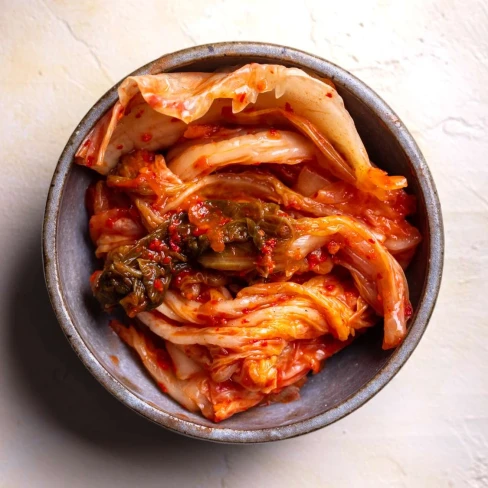Baechu Kimchi (Napa Cabbage Kimchi)
Prep Time
25m
Cook Time
5m
Total Time
30m
This Baechu Kimchi (Napa Cabbage Kimchi) recipe combines crunchy Napa cabbage, garlic, ginger, and Korean chilli powder to create a delicious and flavorful traditional Korean side dish. The kimchi is brined and then combined with an assortment of vegetables and seasonings for a tangy and spicy flavor explosion.
Ingredients
Steps
Nutrition Facts
Ingredients
(Servings:
48)
Scale
Scale
For Brining The Cabbage
For Making The Kimchi
Steps
View steps on seriouseats.com or by saving the recipe to your
personal library.
Register for free to start
saving recipes.
Nutrition Facts
Nutrition facts are based on 1 serving. If servings is not specified, 6 is assumed for the total
recipe.
-
Calories53kcal2%
-
Fat1g0%
-
Saturated Fat0g0%
-
Carbohydrates10g0%
-
Fiber1g0%
-
Sugar4g0%
-
Protein2g0%
-
Cholesterol6mg0%
-
Sodium3,600mg180%
Percent Daily Values are based on a 2,000 calorie diet.
